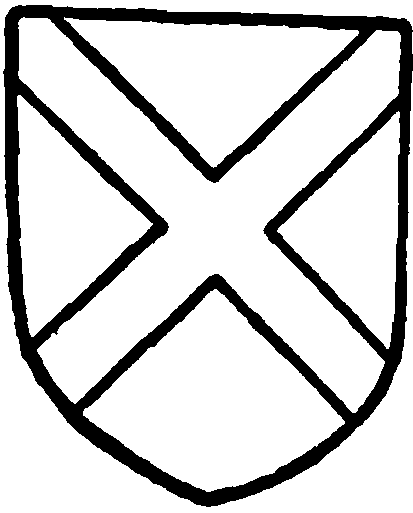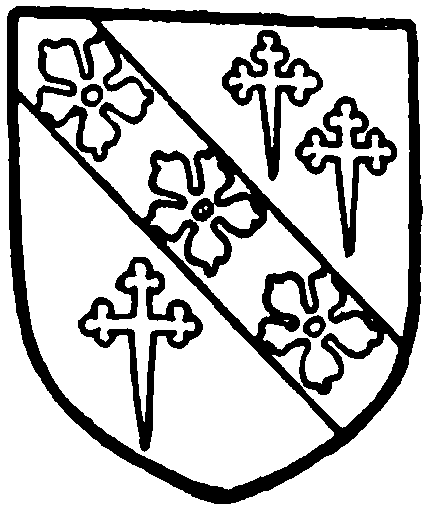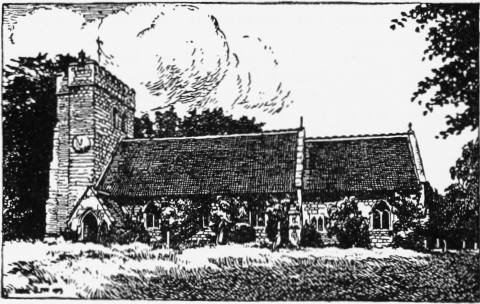A History of the County of Buckingham: Volume 3. Originally published by Victoria County History, London, 1925.
This free content was digitised by double rekeying. All rights reserved.
'Parishes: Aston Abbots', in A History of the County of Buckingham: Volume 3, ed. William Page( London, 1925), British History Online https://prod.british-history.ac.uk/vch/bucks/vol3/pp328-330 [accessed 15 January 2025].
'Parishes: Aston Abbots', in A History of the County of Buckingham: Volume 3. Edited by William Page( London, 1925), British History Online, accessed January 15, 2025, https://prod.british-history.ac.uk/vch/bucks/vol3/pp328-330.
"Parishes: Aston Abbots". A History of the County of Buckingham: Volume 3. Ed. William Page(London, 1925), , British History Online. Web. 15 January 2025. https://prod.british-history.ac.uk/vch/bucks/vol3/pp328-330.
In this section
ASTON ABBOTS
Estuna, Eastun, Estone (xi cent.); Abbodes Aston, Aston Abbatis (xiii cent.).
The parish of Aston Abbots, containing the village of the same name and hamlet of Burston, covers an area of 2,198 acres, of which 263 acres are arable land producing crops of wheat, 1,814 acres are laid down in grass, and there are 17 acres of woods and plantations. (fn. 1) The soil is of sand and gravel, with a subsoil of sand.
The land is high, rising to 468 ft. above the ordnance datum at a point north of the village, whence extensive views can be obtained of the surrounding country. The village, which includes several buildings of the 16th and 17th centuries, is small and compact, with a small green in the centre, on the north side of which is the church. Near by is the vicarage, a substantial building dating from c. 1830. The present school was built in 1874, the former one together with five ancient cottages having been pulled down. There is an Independent chapel, built about 1839, and a Primitive Methodist chapel dating from 1862.
Slightly to the west of the village is the site of the ancient country house of the Abbots of St. Albans, from whom the parish derived its distinctive name. The present house, known as the Abbey, is a modern building of brick covered with stucco, having been practically rebuilt in the 19th century. Some of the walls, however, are of exceptional thickness, and may be part of the original building. The house stands in grounds containing a sheet of water, with a view over the town and vale of Aylesbury. It was once occupied by Sir James Clark Ross, discoverer of the Magnetic Pole in 1831, who died here in 1862. It is now the property and residence of Lieut.-Col. Henry Mitchell Sholto Douglas.
To the south-west of the Abbey is Windmill Hill, an elevation of 440 ft. The hamlet of Burston lies about a mile south-west of Aston Abbots, and consists of Lower Burston and Upper Burston, the farms respectively of Mr. W. H. Denchfield and Mr. Pargeter. Burston House, once the seat of the Lees, stands at the foot of a hill and is a plain solid building, for many years tenanted as a farm by the Denchfield family. It is at present the residence of Mrs. Denchfield. Leland tells us that in his time at Burston 'Mr. Leigh hath a goodly House with Orchardes and a Parke. This Birdstaine is almost in the Midle of the Vale of Aylesbury.' (fn. 2)
The Inclosure Award, under an Act of 1795, is enrolled upon a Plea Roll dated 12 March 1796, at the Public Record Office. (fn. 3)
MANORS
In the time of Edward the Confessor a certain Danish chief called Tolf, (fn. 4) or Wulf, held 'land which is called Eastun' from the king. This land he gave, with the king's consent, 'to the holy church of Alban the Martyr,' where he wished to be buried. At the Domesday Survey (fn. 5) 'Estone' was assessed at 10 hides and was held by the Abbot of St. Albans as one manor, which remained in the possession of the abbey until the Dissolution. (fn. 6) Its tenure was, however, marked by several disturbances, for in 1267 Geoffrey Lucy and others, on a pretext that the abbot held of them, entered his manor of Aston and carried away flocks and goods in distraint. (fn. 7) The abbey's privileges were, moreover, encroached upon by the sheriff, to whom a writ was directed by the king in 1306, ordering him to desist. (fn. 8) In 1381 there were further troubles, and the tenants at Aston, encouraged by the example of the rioters at St. Albans, extorted a charter of liberty from the abbot. (fn. 9)

St. Albans Abbey. Azure a saltire or.
Between 1396 and 1401 Abbot John V made several improvements in the manor, restoring the house, the stone and timber of which was falling into ruin, and making three sheepfolds. (fn. 10) Several of the bondmen on the Aston estate were freed by the abbots, (fn. 11) and the language in the manumission deed of William Jurdon by John Whethamstede between 1421 and 1440 shows that the abbot was considerably in advance of his age in liberality of thought. (fn. 12) After the dissolution of St. Albans Abbey in 1539 (fn. 13) ASTON ABBOTS was granted in the following year to John Lord Russell, (fn. 14) by whom it was alienated two months later to Sir Robert Dormer. (fn. 15) Sir Robert afterwards obtained Grove Manor (q.v.), with which Aston Abbots has since been held, (fn. 16) the manorial rights of both being at present vested in Lady Wantage.
In 1616 Lord Dormer was granted free warren in Aston Abbots. (fn. 17)
In the time of Edward the Confessor 2 hides of land in BURSTON (Bricstoch, xi cent.; Bridelesthon, xiii cent.; Briddestorn, Brydesthorne, xiv cent.; Birstorn, Brudesthorne, xvi cent.; Berdesthorne, xvii cent.) were held by three thegns, of whom 'one was a man of Earl Lewin, the second a man of Goduin Cilt, Abbot of Westminster, the third a man of Alverad of Withunga (Wing).' (fn. 18) In the same place one virgate of land was held by Siward, 'a man of Earl Harold.' In 1086 all this land belonged to the Count of Mortain, the 2 hides being held of him by Alan and the virgate by Almaer. Burston remained attached to the 'small fee of Mortain,' known in this district as the honour of Berkhampstead, (fn. 19) but by 1487 was held of the king in chief, (fn. 20) and afterwards as of his honour of Ewelme, (fn. 21) the overlordship being last mentioned in 1611. (fn. 22)
By 1284 the ownership in fee of the manor was vested in William de Lyngyure, (fn. 23) but had passed before the end of the reign of Edward I to Adam de Welton. (fn. 24) He, or his successor John de Welton, subinfeudated the manor for the service of one clove gillyflower, but the intermediary lordship so created lapsed after 1328. (fn. 25)
In 1302 Walter Wallop and his tenants held Burston in fee, but Walter died some time before 1314, in which year his widow Philippa, then wife of Thomas Gorges, claimed a third of the manor in dower against Margaret Blacket and her husband John Blacket. (fn. 26) Margaret declared that she held the manor for life as the widow of Martin de Rokele, and that the reversion belonged to his brother and heir Humphrey de Rokele. (fn. 27) John Blacket, for an annual pension of 20 marks, conveyed his interest in the manor to Peter Carbonel, (fn. 28) against whom Philippa brought an action in 1323 (fn. 29) and 1324, (fn. 30) without success, however, as Peter Carbonel died seised of Burston about 1328. (fn. 31) His son John was in possession in 1346, (fn. 32) but shortly afterwards the Carbonel family appears to have ended in three female heirs. Of these, Alice, who was probably a daughter of the last male Carbonel, married Nicholas Barun, to whom she brought the reversion of a moiety of the manor, then held for life by Alice wife of John Kentwood, and doubtless the mother of Alice Barun. (fn. 33) In 1364 the Baruns granted the reversion of the manor to John Kentwood for life for the rent of a rose, (fn. 34) and in 1375 Alice Barun, then a widow, conveyed the remainder to William Barton. (fn. 35) Four years later William Barton quitclaimed his interest in Burston to John and Alice Kentwood and their heirs. (fn. 36)
The second moiety of the manor had been divided between Joan and Isabella, the wives respectively of Roger Smale and Henry Marston, (fn. 37) and probably granddaughters of the last Carbonel. In 1368 the Smales conveyed their quarter of Burston to John and Alice Kentwood, and the Marstons similarly dealt with their share in 1376, (fn. 38) so that the Kentwoods thus acquired the whole manor in fee. John Kentwood appears to have died shortly after 1392, (fn. 39) but Alice Kentwood was still in possession in 1404, (fn. 40) and in 1422 and 1436 Reynold Kentwood is mentioned. (fn. 41) He appears to have been succeeded by Nicholas Kentwood and his wife Maud, daughter of Thomas Sackville. (fn. 42) Their son Robert having predeceased them, Burston passed to his son and heir John, who died in 1487, when a claim to the manor was put in by Thomas Rokes as cousin and heir male. (fn. 43) John Kentwood, however, had left two daughters, Elizabeth wife of John Swafield and Frideswide wife of Richard Fettiplace, who were successful in enforcing their right against Thomas Rokes in 1492. (fn. 44) The Swafields alienated their moiety of the manor to Thomas Cartwright in 1508, (fn. 45) who settled it on himself and wife Joan, but on his death without issue it passed to his brother and heir, John Cartwright, (fn. 46) from whom it was purchased in 1516 by Robert Lee. (fn. 47)

Kentwood. Argent a bend between three crosslets fitchy sable with three cinqfoils or on the bend.
The moiety of the manor belonging to Richard Fettiplace had passed by 1508 to William Fettiplace, (fn. 48) in possession in 1516, (fn. 49) and was alienated by him in 1524 to Robert Lee, (fn. 50) who thus acquired the whole of Burston. Lee's trustees, acting on his behalf, in 1526 received the royal licence to impark lands in the manor of Burston and to have free warren and a several fishing in all the water. (fn. 51)
On the death of Sir Robert Lee in 1539, (fn. 52) his widow Lettice wrote to Thomas Cromwell in view of his great goodness to her husband and children, asking for his protection if anyone should wrong her, and reminding him that Sir Robert had made him master of the game at Burston. She sent with the letter 'as a token £10 to buy an ambling nag to hunt with in summer.' (fn. 53)
The Lees held Quarrendon Manor (q.v.), at which place they resided and with which Burston was held until Viscount Dillon sold Burston House to William Leader in 1802. (fn. 54) William Leader was succeeded by his son John Temple Leader, M.P. for Westminster, who was in possession in 1847 and 1862. (fn. 55) Burston has since passed to Mr. Lionel de Rothschild, the present owner.
In 1373 Edmund Mordaunt of Turvey held rent in Burston of Sir John Kentwood. (fn. 56) His greatgrandson Sir John Mordaunt is mentioned in connexion with Burston in 1500, (fn. 57) and on his death in 1504 was succeeded by his son William, who died without issue shortly afterwards, leaving as heir his brother John, afterwards Lord Mordaunt. (fn. 58) Lord Mordaunt was seised of two closes in Burston, one called 'The Manor Place,' which he let to Sir Robert Lee, against whose grandson Sir Henry Lee he brought an action in 1559 for wrongfully detaining the premises. (fn. 59) No mention of the Mordaunts in Burston is found after 1608, when Henry Lord Mordaunt held land here. (fn. 60)
Before the Conquest Osulf, 'a man of Brictric,' held 3 virgates of land in Burston. (fn. 61) In 1086 this was held of Miles Crispin, whose lands afterwards became known as the honour of Wallingford, (fn. 62) to which this property in Burston was still attached in 1300. (fn. 63) The under-tenant in 1086 was William, (fn. 64) and in the 13th century Adam de Welton was in possession, (fn. 65) but the holding has not been traced later.
Other lands in Burston amounting to one hide, held in the reign of Edward the Confessor by a certain woman under Siward, by 1086 formed part of the fief of Walter Giffard, of whom they were held by Turstin. (fn. 66)
CHURCH
The church of ST. JAMES consists of a chancel 22 ft. by 14 ft., north vestry and organ chamber 11 ft. 6 in. by 10 ft. 6 in., nave 47 ft. 6 in. by 17 ft., south porch and a west tower 8 ft. 9 in. by 6 ft. It has walls of aced rubble with limestone dressings except those of the tower, which are of ashlar. The roofs are tiled.

Aston Abbots Church from the South
The church was apparently entirely rebuilt in 1866 with the exception of the west tower, some old materials being used in the walling of the chancel and nave. The tower is probably of early 16th-century date, and the vestry and south porch are both modern; the organ chamber was added in 1890.
The chancel has some 14th-century features re-used, including the inner jambs, rear arch and label of the east window. The north and south walls each have a 14th-century window of two trefoiled lights with a quatrefoil in a two-centred head; the sill of the south window is lowered to form a sedile, and to the east of it is a 14th-century piscina with continuously moulded jambs and a pointed head.
The west tower is of one tall stage with a modern embattled parapet. It has diagonal buttresses and a south-east projecting stair-turret. The tower arch is two-centred and of three orders on the east side and two on the west, all of which are chamfered and die into the tower walls. The west doorway has a plain four-centred head and the west window has three trefoiled lights in a four-centred head; above it is a small loop which lights the ringing chamber. The belfry is lighted by single-light windows with four-centred heads on the north and south and by pairs of similar windows on the east and west. The staircase has one small loop. On the south side is the dial of the clock.
The roof of the nave contains some old timbers re-used.
The font is possibly of 16th-century date and has an octagonal bowl and hollow tapering stem brought to a square with broached stops. In the nave there is a polished oak chest with a panelled front, a bolection moulded curved lid, iron strap hinges, and three locks, which is dated 1695, and in the tower is another plain chest with two locks, probably also of the 17th century.
There are five bells, which are hung in an old framework: the first, second and fourth are inscribed '1652. Chandler made me,' and the third and fifth, 'Edward Hall made me 1740.'
The plate consists of a silver cup with cover of 1562, a silver paten presented in 1898 and a plated alms-dish and flagon.
The registers begin in 1559.
ADVOWSON
The church of Aston Abbots is first mentioned in 1291, when £3 from the tithes was the portion of the kitchener of St. Albans Abbey. (fn. 67) A vicarage was ordained before 1349 (fn. 68) and the right of presentation belonged to St. Albans Abbey, (fn. 69) whose pension in the church was £2 in 1535, the net value of the vicarage being £6 7s. 8d. (fn. 70)
The advowson was afterwards granted to John Lord Russell with the manor (q.v.), with which it has since descended, (fn. 71) Lady Wantage being the present patron.
CHARITY
The charity known as the Church Land, the origin of which is unknown, consists of land of the annual letting value of £10, which with the interest on £63 1s. 5d. consols, held by the official trustees, arising from the sale of land on which stood the original school and five cottages, is applied towards the church expenses.
